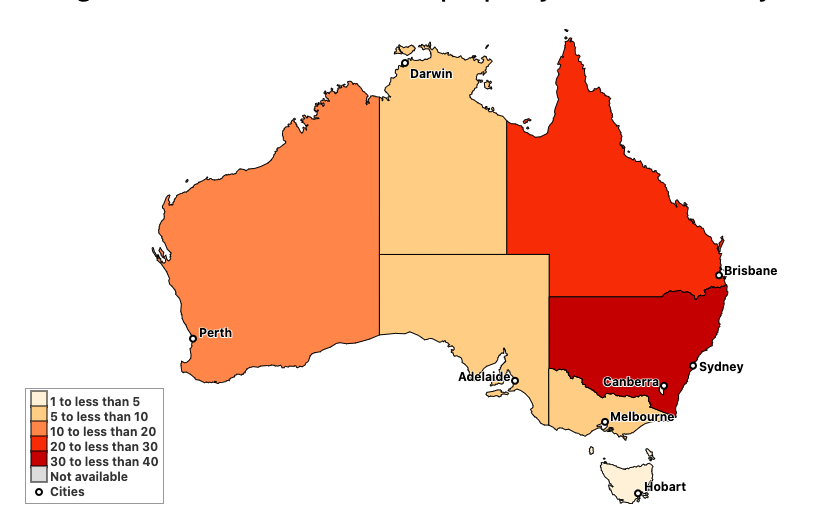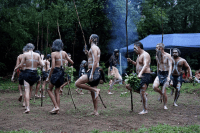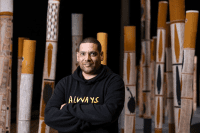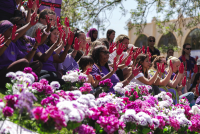Understanding the Indigenous People or Aboriginal and Torres Strait Islander Population in Australia
Australia is home to a rich and diverse cultural heritage, prominently featuring the Indigenous people, Aboriginal and Torres Strait Islander communities. According to the 2021 Census, 812,000 people identified as Aboriginal and/or Torres Strait Islander, making up 3.2% of the national population. This marked an increase from 2.8% in 2016 and 2.5% in 2011. This article provides an in-depth look into the demographics, living conditions, and socio-economic status of Aboriginal and Torres Strait Islander people, offering valuable insights for researchers, policymakers, and the general public.
Demographics and Population Distribution
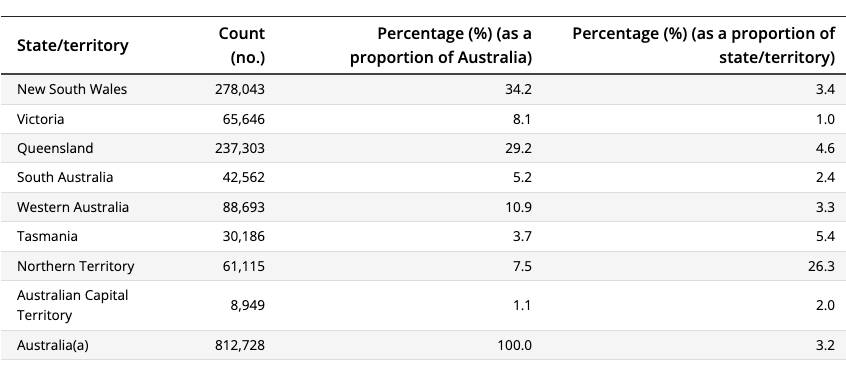
Age Structure and Growth: The Aboriginal and Torres Strait Islander population is notably younger than the non-Indigenous population. In 2021, the median age was 24 years, up from 23 years in 2016. Over half (51.1%) of this population was under 25 years of age.
Geographical Distribution: New South Wales (34.2%) and Queensland (29.2%) host the largest proportions of Aboriginal and Torres Strait Islander people. Despite the Northern Territory having only 7.5% of the Indigenous population, it stands out with 26.3% of its total population being Aboriginal and Torres Strait Islander, the highest proportion in the country.
Living Conditions and Household Composition
Household Size and Composition: On average, Aboriginal and Torres Strait Islander households consist of 3.1 people. Most of these households (79.1%) are family households, with a small percentage (5.1%) comprising multiple families. Additionally, 15.5% of households are lone-person households.
Housing and Tenure: The majority (81.4%) of Aboriginal and Torres Strait Islander people live in suitably sized dwellings. The most common types of housing tenure include homes owned with a mortgage (27.5%) and rented through real estate agents (26.9%).
Language and Education
Language Use: While most Aboriginal and Torres Strait Islander people (84.1%) speak only English at home, about 9.5% use an Aboriginal or Torres Strait Islander language. Popular languages include Other Australian Indigenous Languages, Arnhem Land and Daly River Region languages, and Torres Strait Island languages.
Educational Attainment: The completion rate of Year 12 among Aboriginal and Torres Strait Islander people aged 20-24 has risen to 56.7% in 2021, from 37.1% in 2011. Additionally, 10.2% of individuals aged 18-24 were attending university or higher education institutions in 2021, up from 6.6% in 2011.
Health and Socio-Economic Status
Health Conditions: The 2021 Census revealed significant data on long-term health conditions. Notably, Aboriginal and Torres Strait Islander females reported higher rates of arthritis (7.7%) and asthma (15.2%) compared to males. Mental health conditions were also more prevalent among females (15.6%).
Income and Employment: In 2021, over a third (36.7%) of Aboriginal and Torres Strait Islander households had a weekly income of $1,000 or more. The median weekly income was $830. This income data is crucial for understanding the economic challenges and opportunities within these communities.
Closing the Gap and Future Initiatives
National Agreement on Closing the Gap: The National Agreement on Closing the Gap aims to improve life outcomes for Aboriginal and Torres Strait Islander people. It includes 17 socio-economic targets, with mixed progress reported in 2022. Notably, targets such as healthy birthweight of babies and youth detention rates are on track, while others like adult imprisonment and suicide deaths are not.
Referendum on Constitutional Recognition: A significant step towards reconciliation is the proposed referendum to enshrine an Aboriginal and Torres Strait Islander Voice in the Australian Constitution. This initiative, part of the Uluru Statement from the Heart, aims to give Indigenous Australians a formal role in the legislative process.
Conclusion
Understanding the demographic trends, living conditions, and socio-economic challenges of Aboriginal and Torres Strait Islander people is crucial for fostering an inclusive and equitable society. Continued efforts through policies like the National Agreement on Closing the Gap and initiatives for constitutional recognition are essential steps toward achieving these goals. For more detailed data and information, visit the Australian Bureau of Statistics website.
By highlighting these key aspects, this article aims to inform and engage readers, contributing to a broader understanding and appreciation of the Aboriginal and Torres Strait Islander communities in Australia.
————————————————————————————————–
The National Indigenous Cultural Centre (NICC) is an Indigenous home.
We provide Indigenous products, music, art and news.
If you want Indigenous gifts and merchandise, bush tucker food at your next event or Indigenous entertainment at your next party, expo or conference, feel free to contact us!
Visit our page: https://nicc.org.au/
Tony Clemenger.
Chief Executive Officer.
Tel: 0419431649.
Level 1 397 Chapel Street South Yarra 3141.


